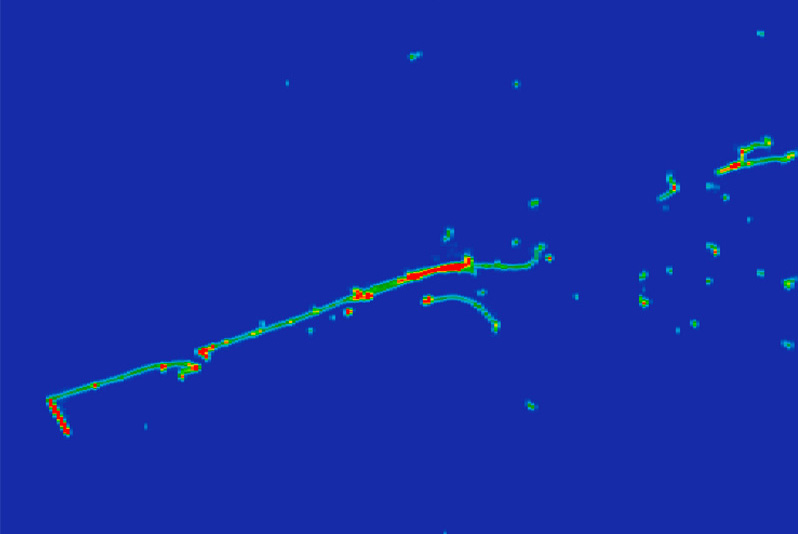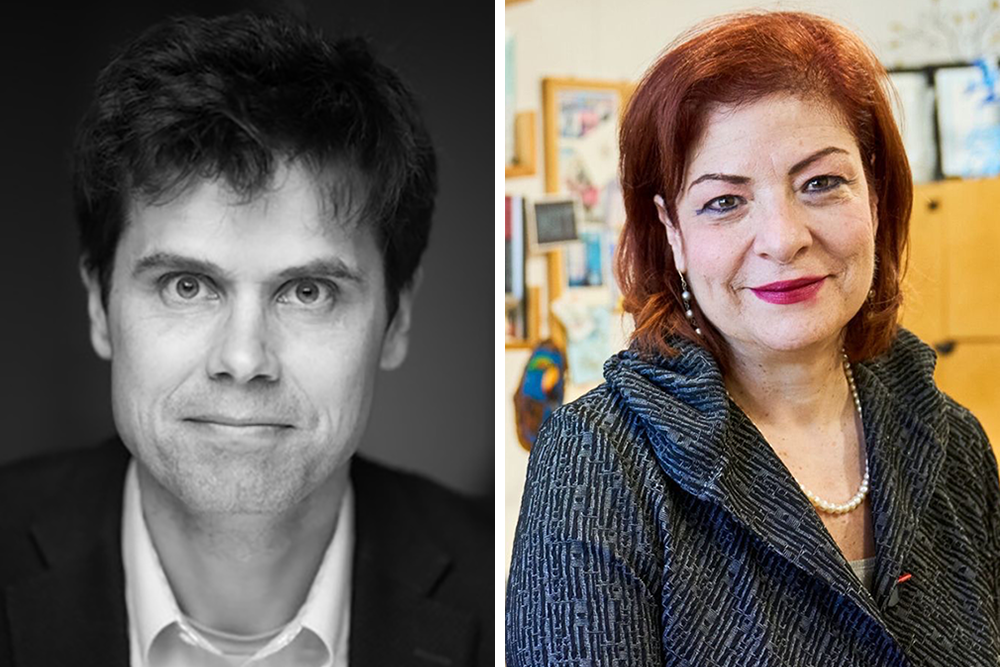3 Questions: Investigating a long-standing neutrino mystery
Graduate student Nicholas Kamp describes the MicroBooNE experiment and its implications for our understanding of fundamental particles.

Neutrinos are one of the most mysterious members of the Standard Model, a framework for describing fundamental forces and particles in nature. While they are among the most abundant known particles in the universe, they interact very rarely with matter, making their detection a challenging experimental feat. One of the long-standing puzzles in neutrino physics comes from the Mini Booster Neutrino Experiment (MiniBooNE), which ran from 2002 to 2017 at the Fermi National Accelerator Laboratory, or Fermilab, in Illinois. MiniBooNE observed significantly more neutrino interactions that produce electrons than one would expect given our best knowledge of the Standard Model — and physicists are trying to understand why.
In 2007, researchers developed the idea for a follow-up experiment, MicroBooNE, which recently finished collecting data at Fermilab. MicroBooNE is an ideal test of the MiniBooNE excess thanks to its use of a novel detector technology known as the liquid argon time projection chamber (LArTPC), which yields high-resolution pictures of the particles that get created in neutrino interactions.
Physics graduate students Nicholas Kamp and Lauren Yates, along with Professor Janet Conrad, all within the MIT Laboratory for Nuclear Science, have played a leading role in MicroBooNE’s deep-learning-based search for an excess of neutrinos in the Fermilab Booster Neutrino Beam. In this interview, Kamp discusses the future of the MiniBooNE anomaly within the context of MicroBooNE’s latest findings.
Q: Why is the MiniBooNE anomaly a big deal?
A: One of the big open questions in neutrino physics concerns the possible existence of a hypothetical particle called the “sterile neutrino.” Finding a new particle would be a very big deal because it can give us clues to the larger theory that explains the many particles we see. The most common explanation of the MiniBooNE excess involves the addition of such a sterile neutrino to the Standard Model. Due to the effects of neutrino oscillations, this sterile neutrino would manifest itself as an enhancement of electron neutrinos in MiniBooNE.
There are many additional anomalies seen in neutrino physics that indicate this particle might exist. However, it is difficult to explain these anomalies along with MiniBooNE through a single sterile neutrino — the full picture doesn’t quite fit. Our group at MIT is interested in new physics models that can potentially explain this full picture.
Q: What is our current understanding of the MiniBooNE excess?
A: Our understanding has progressed significantly of late thanks to developments in both the experimental and theoretical realms.
Our group has worked with physicists from Harvard, Columbia, and Cambridge universities to explore new sources of photons that can appear in a theoretical model that also has a 20 percent electron signature. We developed a “mixed model” that involves two types of exotic neutrinos — one which morphs to electron flavor and one which decays to a photon. This work is forthcoming in Physical Review D.
On the experimental end, more recent MicroBooNE results — including a deep-learning-based analysis in which our MIT group played an important role — observed no excess of neutrinos that produce electrons in the MicroBooNE detector. Keeping in mind the level at which MicroBooNE can make the measurement, this suggests that the MiniBooNE excess cannot be attributed entirely to extra neutrino interactions. If it isn’t electrons, then it must be photons, because that is the only particle that can produce a similar signature in MiniBooNE. But we are sure it is not photons produced by interactions that we know about because those are restricted to a low level. So, they must be coming from something new, such as the exotic neutrino decay in the mixed model. Next, MicroBooNE is working on a search that could isolate and identify these additional photons. Stay tuned!
Q: You mentioned that your group is involved in deep-learning-based MicroBooNE analysis. Why use deep learning in neutrino physics?
A: When humans look at images of cats, they can tell the difference between species without much difficulty. Similarly, when physicists look at images coming from a LArTPC, they can tell the difference between the particles produced in neutrino interactions without much difficulty. However, due to the nuance of the differences, both tasks turn out to be difficult for conventional algorithms.
MIT is a nexus of deep-learning ideas. Recently, for example, it became the site of the National Science Foundation AI Institute for Artificial Intelligence and Fundamental Interactions. It made sense for our group to build on the extensive local expertise in the field. We have also had the opportunity to work with fantastic groups at SLAC, Tufts University, Columbia University, and IIT, each with a strong knowledge base in the ties between deep learning and neutrino physics.
One of the key ideas in deep learning is that of a “neutral network,” which is an algorithm that makes decisions (such as identifying particles in a LArTPC) based on previous exposure to a suite of training data. Our group produced the first paper on particle identification using deep learning in neutrino physics, proving it to be a powerful technique. This is a major reason why the recently-released results of MicroBooNE’s deep learning-based analysis place strong constraints on an electron neutrino interpretation of the MiniBooNE excess.
All in all, it's very fortunate that much of the groundwork for this analysis was done in the AI-rich environment at MIT.





































